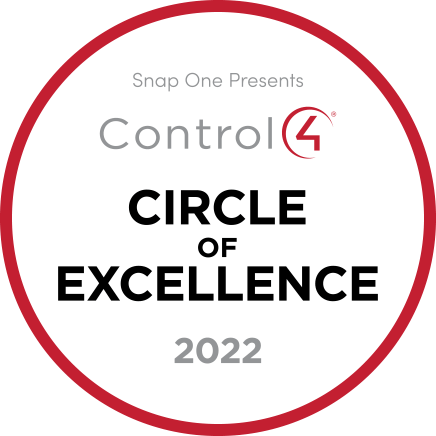People with Mobility Challenges
Supporting you in your home
Mobility challenges
People with complex physical disabilities face a multitude of challenges, encompassing physical limitations, emotional and mental health impacts, social barriers, and difficulties with daily living activities. These challenges can affect their ability to participate fully in society and lead to feelings of isolation, anxiety, and depression.
Challenges can be wide ranging from physical, emotional and mental, social as well as those associated with dailing living activities.
Following are just some of the common challenges associated with mobility challenges:
- Limited Mobility and Function
- Pain and Fatigue
- Accessing the Environment
- Communication Difficulties
- Anxiety and Depression
- Social Isolation
- Personal Care
Positive outcomes for people with mobility challenges
Automated Spaces offers a variety of Independent Living Technology solutions that can provide a broad range of positive outcomes for those living with mobility challenges:
- Increased Independence
- Improved Access to Environment
- Reduced Risk of Falls
- Reduced Risk of Long Lie
- Improved Dignity
- Maintenance of Personal Health & Hygiene
- Reduced Pain & Fatigue
- Improved Home Safety
- Reduced Power Consumption
- Improved Communication with Others
- Reduced Sense of Loneliness/Social Isolation
- Reduced Anxiety & Stress
- Increased Personal Safety
- Increased Confidence
Some of our Independent Living Technology solutions also can provide the following outcomes for those caring for people with mobility challenges:
- Reduced Demand on their Time
- Increased Quality of Time with Family Member/Friend
- Reduced Stress/Anxiety
- Faster Response to Emergency
If you would like to know more about how we can provide these outcomes
Independent living technology solutions for mobility challenges
Automated Spaces can provide the following Independent Living Technology solutions for mobility challenges:
- Voice control of your environment
- Voice activated communications
- Smart home scenes
- Occupancy activated room lighting
- Internet connected doorbell
- Fall detection sensors
- Smart door locks
- Automated doors
- Motorised multipoint door locks
- CCTV recognition event activation
- Motorised window blinds/curtains
- Motorised window openers
See the following sections for further details about the independent living technologies for mobility challenges.
You can also download our
mobility challenges
brochure
by completing the form at the bottom of this page.
Voice control of your environment
Voice or ‘Text to Speech’ control of specific items e.g., using a voice assistant like Amazon Alexa to open/close blinds, turn on/off lights, boil the kettle, turn on a fan, turn on TVs or control central heating by voice command alone. This provides hands-free operation of your environment.
Useful for those with limited or no use of their hands or upper limbs as well as those who have difficulty moving around their property.
Voice activated communications
Using the ‘Drop In’ function of Amazon Alexa to initiate a voice call with a relative or an emergency contact without needing to dial a number or even have a phone close to hand.
Useful for those that struggle to physically interact with a phone.
Smart home scenes
Smart home scenes can simultaneously automate numerous actions around the home e.g., ‘Good Morning’ scene that turns on the lights at an appropriate light level, switches on a TV/radio station to a favourite channel, opens blinds/curtains and starts boiling the kettle.
Automating tasks, that are typically manual tasks, helps reduce the risks of falls.
Useful for those that would struggle to move around a property.
Occupancy activated room lighting
Lights in rooms automatically turn on when someone enters or leaves the room depending on the time of day and whether the room is dark. No more having to reach the switch lights on walls to turn lights on/off.
Useful for those with limited or no use of their hands or upper limbs.
Internet connected doorbell
An internet-connected doorbell or intercom system simplifies answering visitors by allowing you to remotely open a locked door from any room in the house, eliminating the need to physically go to the door. This feature also allows family members who are not home to grant access to emergency responders or carers if the resident is unable to reach the door.
Useful for those that would struggle to move around their property and get to their front door.
Fall detection sensors
Fall detection sensors with push notification/email alerts sent to family members or informal care providers. Fall sensors are ceiling mounted, meaning the person in the home doesn’t need to use a wearable fall alarm device or be able to reach a phone to summon assistance.
Useful for those prone to falls.
Smart door locks
A multipoint door lock with an integrated fingerprint scanner can be unlocked using just your fingerprint or a smart phone, removing the need to carry around door keys.
Reduce the anxiety and safety risks associated with losing the keys to your home.
Useful for those that would struggle to insert or turn a key in a door lock.
Automated doors
Automated doors can be remotely triggered to open or close, making the process of entering and leaving the home much simpler. They are combined with enhanced proximity sensors for safer operation.
Useful for those who struggle to open or close doors.
Motorised multipoint door locks
Multipoint door locks can automatically engage into place and secure a door when it is closed without the need to lift the door handle. The locks also have an inbuilt motor, that can be remotely triggered, allowing the door to be unlocked without having to insert a physical key.
This is useful when combined with an automated door opener.
Useful for those that struggle to lift a door handle to engage a multi-point locking mechanism or turn a handle to open a door.
CCTV recognition event activation
Equipped with advanced recognition software, CCTV cameras can detect people or cars on a driveway and even identify specific vehicle number plates.
Detection of a known number plate can trigger events e.g., arrival of a resident's mobility car could trigger the porch light to turn on, front door to unlock and swing open, and the hallway lights to turn on, all while the resident is exiting their car onto their wheelchair!
Or alternatively, the arrival of a family member’s car can trigger an audible notification in the home that they have arrived, and then automatically unlock the entrance door.
Useful for those that use a wheelchair and need to gain access to their property independently.
Motorised window blinds/curtains
Motorised window blinds/curtains can be opened as part of a smart home scene or via voice command. No more having to reach for pull cords to manually operate the blind/curtain, reducing the risks of falls.
Useful for those unable to, or who struggle to manually operate blinds or curtains.
This solution is also useful for those prone to falls.
Motorised window openers
Motorised window openers, that can be remotely triggered to open or close, allow the window to be operated without having to reach for handles on the window, which can reduce the chance of a fall.
Voice activation is also available for those unable to manually operate windows.
Useful for those unable to, or who struggle to manually operate blinds or curtains.
This solution is also useful for those prone to falls.


